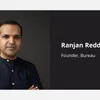Favourable policies, convenience-driven mindset, and evolution of the new normal have brought in a renewed focus on tech adoption. Smartphones now act as a catalyst for digital penetration across the tier-2 and 3 markets in India.
The India edition of Deloitte’s 2022 Global TMT (Technology, Media, and Entertainment, Telecom) predictions indicates that digital and mobile are the key enablers of the future of technology. This edition captures the latest trends in the Indian TMT space that are driven by the economic and societal shifts caused by the global pandemic.
Here are some key takeaways from the Deloitte’s 2022 Global TMT India report:
- The smartphone market is expected to reach 1 billion smartphone users by 2026, the report stated. This growth is likely to be propelled by the rural sector at a CAGR of 6 percent, compared with the urban sector growing at a CAGR of 2.5 percent from 2021 to 2026. Higher internet adoption is expected to fuel demand for smartphones. This increased demand will be propelled by the need to adopt fintech, e-health, and e-learning. In 2021, India recorded 1.2 billion mobile subscribers of which 750 million were smartphone users.
“India will have 1 billion smartphone users by 2026. This growth will result in over 75 percent of the subscribers using smartphones by 2026 from a sub- seventy percent as on date. 5G enabled devices will contribute 80 percent to the devices being sold in the year 2026 and Indian consumers will purchase 840 million 5G smartphones over the next 5 years valued at US$130 billion. In addition, 5G will fuel an incremental sale of 135 million smartphone units over the next 5 years,” said Peeyush Vaish, Partner and Telecom Sector Leader, Deloitte India.
- Demand for smartphones in India is expected to increase at a CAGR of 6 percent, to reach about 400 million smartphones in 2026 from 300 million in 2021. This high demand is likely to be primarily created after the launch of 5G, which will alone contribute 80 percent of the devices (about 310 million units) by 2026. 5G is believed to become the fastest-adopted mobile technology due its diverse applications, such as high-speed gaming and remote healthcare. After the launch of 5G, additional shipments of smartphones are expected to be 135 million by 2026.
- The OTT market currently makes up only 7−9 percent of India’s entertainment industry. However, the OTT space is expected to grow at a CAGR of more than 20 percent to reach $13-15 billion over the next decade, the report said. This growth will be driven by heavy investment in original content, pricing innovations, low data costs, and the rise of short-form content. The market for providing video streaming services in India is highly fragmented with more than 40 streaming players vying for the customer’s wallet. Global streaming service providers (such as Amazon, Disney-owned Hotstar, SonyLiv, and Netflix) compete with domestic service providers (such as Zee5, Voot, and MX Player), as well as a host of regional and ultra-localized players.
- Demand for OTT streaming content based on geodemography is on the rise in India. The country is witnessing a boom in regional content and platforms created to address this demand. The share of regional language consumption on OTT platforms is expected to cross 50 percent by 2025 from 30 percent held in 2019.
“Evolving consumer behaviour in view of the pandemic has increased digital content consumption in India. Audiences are experimenting with genres and languages with regional content breaking out of its traditional boundaries. Fierce competition is likely to persist in the short-to-medium term with more than 40 service providers in the fray,” said Jehil Thakkar, Partner, Media and Entertainment Sector Leader, Deloitte India.
- Deloitte Global predicts that many types of chips will still be in short supply throughout 2022, and with some component lead times pushing into 2023, meaning that the shortage will have lasted 24 months before it recedes, similar to the duration of the 2008–2009 chip shortage. The report also delivered good news that the customers who were waiting between 20–52 weeks for multiple kinds of semiconductors will now see a waiting time which is closer to 10–20 weeks.
- Key movie celebrities such as Amitabh Bachchan, Rajnikanth, Salman Khan, and Kamal Hassan launched NFTs in 2021. These NFTs included an autographed digital version of vintage posters, movie collectibles from blockbusters, and digital moments of famous movie characters. Cricketers such as Sunil Gavaskar, Yuvraj Singh, and Rishabh Pant are also a part of this bandwagon. These early movers are expected to catalyse the market. Given the global trends and the government of India’s pending policy and regulatory framework in this area, sooner than later, an NFT-based market on movies and sports will become a reality in India. With more than 500 million cricket fans in India, and Bollywood and regional cinemas swaying over the Indian populace, an NFT marketplace for just cinema and sports in India has the potential to cross $1 billion in value in the near future.
These trends are poised to result in a better-connected ecosystem of multiple digital devices that can meet the world's ever-increasing need for faster connectivity, and more chips and entertainment options.
Edited by Rajiv Bhuva


